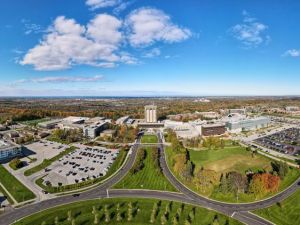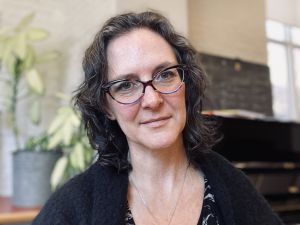American women have faced serious obstacles to accessing abortion since the ruling in Roe v Wade first came down in 1973, says Tami Friedman, an Associate Professor with Brock University’s Department of History.
“The lead-up to this has been a long-time coming,” says Friedman. “For decades now, many states have managed to strip away access in all sorts of ways, by mandating waiting periods, invasive procedures, inaccurate ‘counselling,’ unreasonable clinic standards, and much more.”
In addition to hundreds of laws already restricting abortion rights, a number of states have outright bans in place that are set to kick in once Roe v Wade is overturned, says Friedman.
“Many medical schools don’t offer abortion training, and many hospitals don’t provide abortions,” she says. “Eighty-nine percent of U.S. counties have no place to get an abortion.”
The Supreme Court’s draft opinion overturning Roe v Wade, if made official, will have far-reaching impact on women, trans men, and non-binary people. Roe v Wade has been used to federally protect abortion rights in the U.S. since 1973.
Margot Francis, Associate Professor of Women’s and Gender Studies, says this is the first time the Supreme Court has taken away rights that have been federal law for a considerable period of time.
“Precedent has been changed in the past, but it has usually been changed to grant more rights,” she says, referencing laws to allow same-sex marriage, decriminalize same-sex acts and desegregate schools. “Those laws all overturned federal precedent, but in order to establish access to more rights for a larger sphere of people. This will demolish federal precedent in a way that takes rights away from so many.
“We should be aware that other federal precedents may be overturned in the future,” Francis says.
Most impacted by the overturning of Roe v Wade will be America’s poor, a disproportionate number of whom are Black or racialized, Francis says.
“This is a deeply racialized decision,” she says. “This is a particular blow to Black, racialized and poor women, and suggests the Supreme Court is willing to enact laws that disproportionately harm them.” .”
While the “most devastating impact” will be felt by people in states that outlaw abortion, those living in other areas of the U.S. will not go unaffected, Francis says.
People who have the means to travel to states still providing abortions will do so, leaving remaining clinics inundated and further reducing access for patients living within those communities, she says.
Opponents to the Supreme Court’s Roe v Wade decision in 1973, most notably the Catholic Church and then right-wing evangelical Protestants, immediately undertook efforts to limit access to abortion. The 1976 Hyde Amendment banned the use of federal funds for abortions, thereby denying abortion access to poor people. Abortion opponents physically blocked access to clinics and engaged in violent crimes including arson and murder to terrorize those seeking abortions as well as abortion providers, says Friedman.
But abortion hasn’t always been such a hot-button issue in the U.S., she says.
“Well into the 19th century, abortion was more or less acceptable until a woman could feel a fetus moving, called the quickening,” says Friedman. “Male doctors were at the forefront in criminalizing abortion starting in the late 1860s, mainly out of a desire to establish themselves as professionals and drive midwives and homeopathic practitioners out of healthcare.”
Ironically, says Friedman, it was doctors 100 years later who became key players in the fight to legalize abortion, joined by women who were emboldened by the movements for women’s rights and liberation in the 1960s and 1970s.
“Doctors were turning away desperate women and then seeing those women dying in emergency rooms from self-induced or illegal abortions,” she says. “Those doctors wanted to be able to practice medicine without government interference.”
The campaign to shut down abortion rights emerged as a part of a bigger campaign by conservatives to gain political power in the 1970s and 1980s, says Friedman.
“A lot of conservative political strategists didn’t care that much about abortion,” she says. “They saw it as an issue that would help mobilize a grassroots base to bring conservative politicians to power. We’re still living with those efforts today.”
While Friedman doesn’t see Congress enshrining the right to abortion in law right now, she does note that a solid majority of American support the right to abortion, even in very conservative states like Texas.
“The draft ruling doesn’t reflect the ‘will of the people.’ That will help activists as they develop new strategies at the state level to translate public opinion into public policy,” she says. “Pro-abortion advocates will need to keep the right of women to participate fully in society front and centre in the struggle to preserve the right to abortion.”
Francis urged Canadians not to be complacent about the issue locally.
“People think the right to reproductive autonomy is completely settled in Canada, and that’s not the case,” she says. “People who want abortions in the Maritimes, the North and in rural areas have a more difficult time accessing abortion. There’s still work to be done.”










